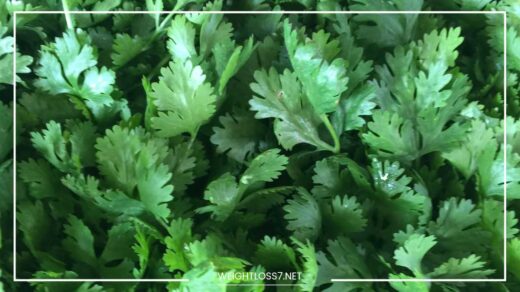Gypsywort Uses and Health Benefits

Gypsywort
Gypsywort: An In-Depth Exploration of a Versatile Herbal Remedy
Gypsywort, scientifically known as Lycopus europaeus, is a perennial herb with a storied history in traditional medicine.
Its reputed benefits and applications have been recognized for centuries, making it a significant plant in herbal practices around the world.
In this comprehensive guide, we will delve into the history, botanical characteristics, traditional uses, modern scientific research, methods of use, and important considerations associated with gypsywort.
1. Introduction to Gypsywort
Gypsywort has been a part of herbal medicine traditions for hundreds of years, valued for its diverse therapeutic properties.
Its name is thought to be derived from the Romani people, who may have used the plant in their traditional practices.
Although historical records on this specific usage are sparse, gypsywort has established a reputation for its potential health benefits that span various cultures and medicinal practices.
2. Botanical Characteristics
2.1 Taxonomy and Classification
Gypsywort belongs to the Lamiaceae family, which includes many well-known herbs like mint, rosemary, and sage.
The genus Lycopus consists of several species, but Lycopus europaeus is the most prominent in traditional medicine.
2.2 Morphology
Gypsywort is a herbaceous perennial that typically grows to a height of 1 to 1.5 meters (3 to 5 feet). It has distinctive square stems, a characteristic feature of the mint family.
The leaves are ovate to lanceolate, with serrated margins, and are arranged opposite each other along the stem.
Small, white to pale lavender flowers appear in dense clusters, and the plant blooms from mid-summer to early autumn.
2.3 Habitat and Distribution
Gypsywort is commonly found in wetland areas such as marshes, riverbanks, and damp woodlands. It thrives in moist, nutrient-rich soils and can be found throughout Europe and parts of Asia. Its preference for wet environments makes it an indicator species for healthy wetland ecosystems.
3. Historical and Cultural Significance
3.1 Traditional Uses Across Cultures
Gypsywort has been used in various traditional medicine systems:
- European Traditions: In Europe, gypsywort has been used in folk medicine to treat a range of ailments. It was particularly noted for its use in regulating thyroid function and treating heart palpitations.
- Native American Medicine: Indigenous peoples in North America also valued gypsywort for its purported benefits. It was used in various preparations to address conditions such as digestive issues and respiratory ailments.
- Asian Practices: In some Asian cultures, gypsywort has been used in traditional remedies for its calming effects and to treat menstrual disorders.
3.2 Modern Revival and Popularity
In recent years, there has been a renewed interest in gypsywort as part of the broader herbal medicine revival. Its use in modern herbal practices reflects a growing appreciation for traditional remedies and their potential benefits.
4. Traditional Uses of Gypsywort
Gypsywort has been employed in a variety of ways in traditional medicine:
4.1 Thyroid Disorders
One of the primary traditional uses of gypsywort is in managing thyroid conditions, particularly hyperthyroidism.
The herb is believed to help regulate thyroid hormone production and reduce symptoms associated with an overactive thyroid.
This use is attributed to gypsywort’s ability to inhibit the conversion of iodine into thyroid hormones, a critical process in thyroid function.
4.2 Heart Palpitations
Gypsywort has been historically used to address irregular heartbeats and palpitations. The herb is thought to have a calming effect on the cardiovascular system, potentially helping to normalize heart rate and rhythm.
4.3 Anxiety and Stress
In traditional practices, gypsywort has been used as a remedy for anxiety and stress. The herb is believed to have mild sedative properties that help reduce feelings of tension and promote relaxation.
4.4 Menstrual Disorders
Gypsywort has been used to treat various menstrual issues, including irregular periods and heavy bleeding. Its purported effects on menstrual health may be related to its ability to influence hormonal balance.
4.5 Wound Healing
The astringent properties of gypsywort make it a valuable herb for wound care. Traditional uses include applying the plant topically to promote healing and reduce inflammation in minor wounds and skin irritations.
5. Modern Research on Gypsywort
5.1 Thyroid Regulation
Recent scientific studies have begun to explore the mechanisms behind gypsywort’s traditional use in thyroid disorders.
Research suggests that gypsywort may help regulate thyroid hormone levels by inhibiting the conversion of iodine into thyroid hormones.
This action could potentially be beneficial for individuals with hyperthyroidism, but further studies are needed to confirm its efficacy and safety.
5.2 Antioxidant Properties
Gypsywort contains compounds with significant antioxidant activity. Antioxidants are crucial for protecting cells from oxidative stress and damage caused by free radicals.
Preliminary research indicates that gypsywort’s antioxidant properties may contribute to overall cellular health and potentially support longevity.
5.3 Anti-inflammatory Effects
Several studies have highlighted gypsywort’s potential anti-inflammatory effects. Chronic inflammation is a contributing factor in many health conditions, including arthritis and cardiovascular diseases.
Gypsywort’s ability to modulate inflammatory pathways may offer therapeutic benefits for managing inflammation-related conditions.
5.4 Cardiovascular Health
Research into gypsywort’s effects on cardiovascular health is ongoing. Some studies suggest that the herb may help regulate blood pressure and heart rate, contributing to overall cardiovascular wellness. However, more clinical trials are needed to establish its effectiveness and safety in this area.
6. Methods of Use
Gypsywort can be used in various forms, each offering unique benefits:
6.1 Dried Herb
The dried herb can be brewed into a tea, which is a common method for ingesting gypsywort. Herbal teas are typically made by steeping the dried plant material in hot water for several minutes. This preparation method allows for the extraction of the herb’s active compounds into a liquid form.
6.2 Tincture
A tincture is an alcohol-based extract of the plant, which concentrates the herb’s active ingredients. Tinctures are typically more potent than teas and can be taken in small doses. They are often used for their therapeutic effects and are convenient for those who prefer a more concentrated form of the herb.
6.3 Topical Applications
Gypsywort can be applied topically as a salve or ointment to address skin conditions. Its astringent and anti-inflammatory properties make it useful for treating minor wounds, skin irritations, and inflammatory skin conditions.
7. Important Considerations
7.1 Consultation with Healthcare Providers
Before incorporating gypsywort into your health regimen, it is essential to consult with a healthcare professional.
This is particularly important for pregnant or breastfeeding women, individuals with specific medical conditions, or those taking medications.
7.2 Potential Interactions
Gypsywort may interact with certain medications, especially those used to treat thyroid disorders. It is crucial to discuss any potential interactions with your healthcare provider to avoid adverse effects.
8. Potential Side Effects and Precautions
While gypsywort is generally considered safe when used appropriately, some individuals may experience side effects:
8.1 Digestive Issues
Some users may experience gastrointestinal discomfort, including nausea or diarrhea, when using gypsywort. These effects are typically mild but should be monitored.
8.2 Allergic Reactions
Individuals with allergies to plants in the mint family may be at risk of allergic reactions to gypsywort. Symptoms of an allergic reaction can include skin rash, itching, or swelling.
8.3 Medication Interactions
Gypsywort may interact with certain medications, particularly those used to manage thyroid conditions. It is important to consult with a healthcare provider to ensure that gypsywort does not interfere with any current treatments.
9. Future Research Directions
9.1 Clinical Trials
Future research should focus on conducting well-designed clinical trials to confirm the therapeutic benefits and safety of gypsywort. These studies would provide more robust evidence to support its traditional uses and uncover any potential risks.
9.2 Mechanistic Studies
Further research into the mechanisms of gypsywort’s actions can help elucidate how its active compounds interact with biological systems. Understanding these mechanisms can lead to more targeted and effective therapeutic applications.
9.3 Safety Assessments
Ongoing safety assessments are necessary to evaluate the long-term effects of gypsywort use. This includes studying potential interactions with other medications and identifying any long-term side effects.
10. Final Thoughts
Gypsywort is a herb with a rich history in traditional medicine and a growing presence in modern herbal practices. Its diverse range of potential benefits, from thyroid regulation to wound healing, highlights its versatility as a herbal remedy.
While traditional uses are supported by some scientific research, further studies are needed to fully understand its efficacy and safety.
As with any herbal remedy, it is essential to use gypsywort responsibly and under the guidance of a qualified healthcare provider.
By approaching gypsywort with careful consideration and respect for its traditional uses and modern research, individuals can explore its potential benefits while minimizing risks.

















